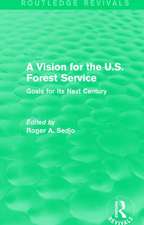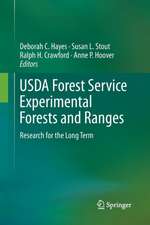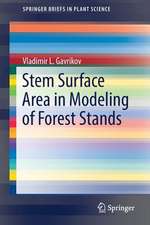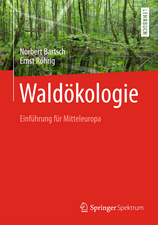Pesticide Resistance in Arthropods
Editat de Richard Roush, Bruce E. Tabashniken Limba Engleză Paperback – 12 iun 2012
Preț: 645.14 lei
Preț vechi: 758.99 lei
-15% Nou
Puncte Express: 968
Preț estimativ în valută:
123.46€ • 128.42$ • 101.93£
123.46€ • 128.42$ • 101.93£
Carte tipărită la comandă
Livrare economică 14-28 aprilie
Preluare comenzi: 021 569.72.76
Specificații
ISBN-13: 9781468464313
ISBN-10: 1468464310
Pagini: 316
Ilustrații: 352 p.
Dimensiuni: 178 x 254 x 25 mm
Greutate: 0.55 kg
Ediția:1990
Editura: Springer Us
Colecția Springer
Locul publicării:New York, NY, United States
ISBN-10: 1468464310
Pagini: 316
Ilustrații: 352 p.
Dimensiuni: 178 x 254 x 25 mm
Greutate: 0.55 kg
Ediția:1990
Editura: Springer Us
Colecția Springer
Locul publicării:New York, NY, United States
Public țintă
ResearchCuprins
1. Introduction.- 2. Resistance Detection and Documentation: The Relative Roles of Pesticidal and Biochemical Assays.- Types and choice of detection methods.- Initial detection of resistance.- Choice of sample size and strategy.- Assessing factors relevant to resistance management.- Future advances in biochemical assays.- Conclusions.- 3. Investigating Mechanisms of Insecticide Resistance: Methods, Strategies, and Pitfalls.- General considerations for resistance studies.- Methods for identifying resistance mechanisms.- Conclusions.- 4. Molecular Mechanisms of Insecticide Resistance.- Resistance conferred by enhanced detoxication.- Resistance conferred by reduced neuronal sensitivity.- Conclusions.- 5 The Role of Population Genetics in Resistance Research and Management.- Genetic basis of resistance.- Influences on the rates of evolution of resistance.- Genetic perspective on practical resistance management.- Summary and conclusions.- 6 Modeling and Evaluation of Resistance Management Tactics.- Classification of resistance models.- Resistance to one insecticide.- Resistance to two or more insecticides.- Resistance in natural enemy-pest systems.- Conclusions and future directions.- 7 The Effect of Agrochemicals on Vector Populations.- Toxicity of agrochemicals to vectors.- Cases of vector resistance due to agrochemical applications.- Evidence for implication of agrochemicals in vector resistance.- Discussion.- 8 Pesticide Resistance in Arthropod Natural Enemies: Variability and Selection Responses.- Recent reviews.- Naturally occurring pesticide resistances.- Artificial selection of arthropod natural enemies.- Potential new sources of variability.- Conclusions.- 9 Management of Pyrethroid-resistant Tobacco Budworms on Cotton in the United States.- Use of pyrethroids and the occurrence of resistance.- Development of resistance monitoring technique.- Development of resistance management strategy.- Resistance monitoring and success of the management strategy.- Nature ofresistance: Extent, biochemistry, and genetics.- Biological costs of resistance to the tobacco budworm.- Field test of insecticide efficacy in relation to the resistance management strategy.- The role of formamidines in pyrethroid resistance management.- Future research needs.- Conclusions.- 10. Resistance Management in Multiple-pest Apple Orchard Ecosystems in Eastern North America.- Resistance to acaricides.- Insecticide resistance in the spotted tentiform leafminer.- Conclusions.- 11. Developing a Philosophy and Program of Pesticide Resistance Management.- Goals, tools, implementation, and constraints to pesticide resistance management (PRM).- A philosophy of resistance management.- Temporal/spatial scales and components of PRM.- The economic/policy environment and constraints to PRM.- Case histories of PRM.- Synthesis of principles.
Recenzii
..a useful review of the few practical tests of tactics. - The Quarterly Review of Biology; ..a useful review of the few practical tests of tactics. - The Quarterly Review of Biology; ..a useful review of the few practical tests of tactics. - The Quarterly Review of Biology



















